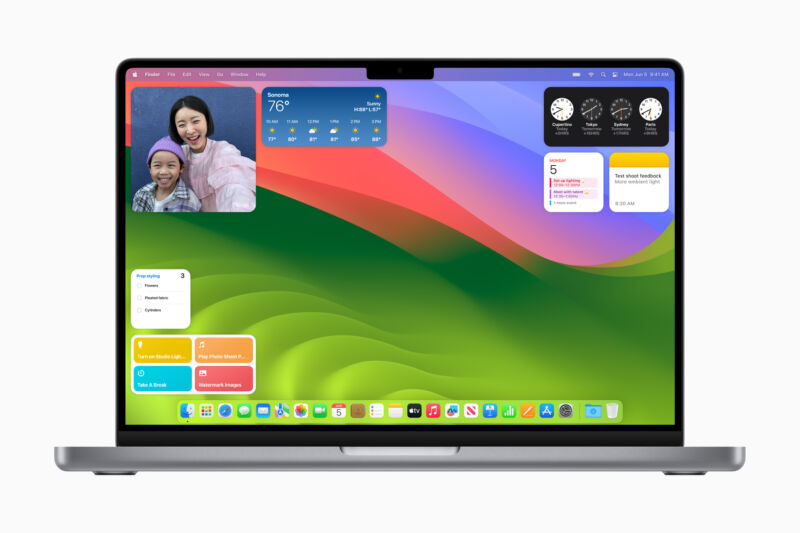
Enlarge / macOS Sonoma runs on Intel Macs, but the list is getting awfully short. (credit: Apple)
With the introduction of the Apple Silicon Mac Pro, Apple has finally completed the Apple Silicon transition and booted all Intel Macs from its current lineup. But software support for Intel Macs isn't quite done, at least not yet. The macOS Sonoma update will still run on a couple generations of Intel Macs, but in general, if you're using anything made before 2018 or anything without an Apple T2 chip in it, you won't be able to run the new OS.
Sonoma drops support for all versions of the 12-inch MacBook, the 2017 MacBook Pro and MacBook Air updates, and the 2017 iMac. Macs made after 2017 all generally integrated Apple's T2 chip, which handled some Touch Bar functionality on some MacBook Pro models, but provided additional security and video encoding features to all Macs that included it. It's essentially an A10 coprocessor included along with the main Intel CPU, a bridge between the Intel era and the M1 and M2 Macs that would follow.
There is one 2017 Mac that's still supported: the one and only iMac Pro, released in December of 2017, which was the first Mac to include the T2. There's also one exception—the 2019 iMac, which doesn't have a T2 on board but does run the same firmware as the other T2 Macs.
Read 2 remaining paragraphs | Comments

Enlarge / macOS Sonoma runs on Intel Macs, but the list is getting awfully short. (credit: Apple)
With the introduction of the Apple Silicon Mac Pro, Apple has finally completed the Apple Silicon transition and booted all Intel Macs from its current lineup. But software support for Intel Macs isn't quite done, at least not yet. The macOS Sonoma update will still run on a couple generations of Intel Macs, but in general, if you're using anything made before 2018 or anything without an Apple T2 chip in it, you won't be able to run the new OS.
Sonoma drops support for all versions of the 12-inch MacBook, the 2017 MacBook Pro and MacBook Air updates, and the 2017 iMac. Macs made after 2017 all generally integrated Apple's T2 chip, which handled some Touch Bar functionality on some MacBook Pro models, but provided additional security and video encoding features to all Macs that included it. It's essentially an A10 coprocessor included along with the main Intel CPU, a bridge between the Intel era and the M1 and M2 Macs that would follow.
There is one 2017 Mac that's still supported: the one and only iMac Pro, released in December of 2017, which was the first Mac to include the T2. There's also one exception—the 2019 iMac, which doesn't have a T2 on board but does run the same firmware as the other T2 Macs.
Read 2 remaining paragraphs | Comments
June 06, 2023 at 01:18AM

Post a Comment